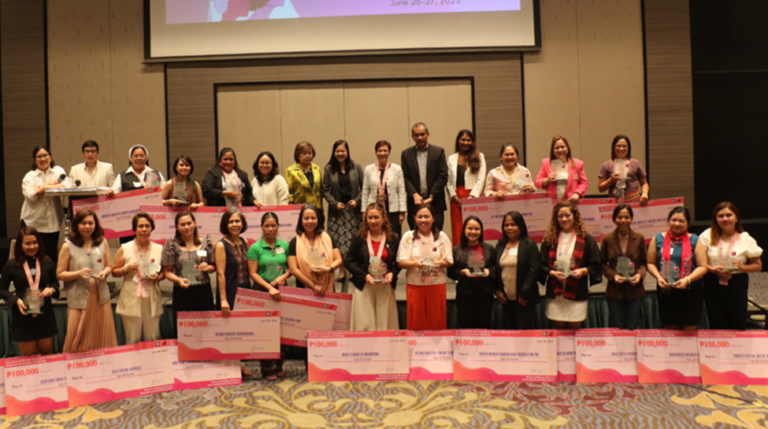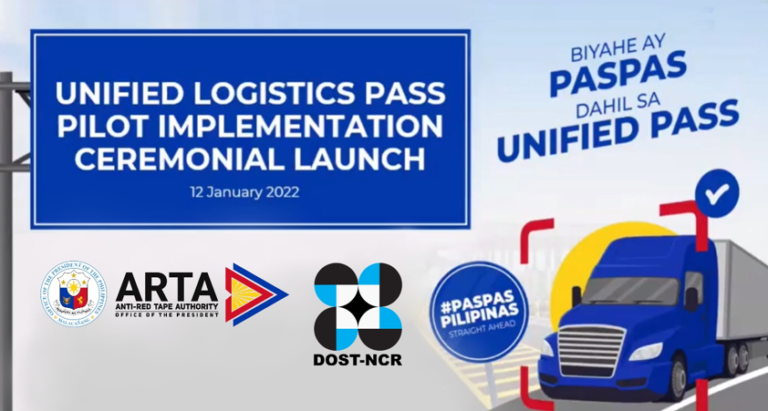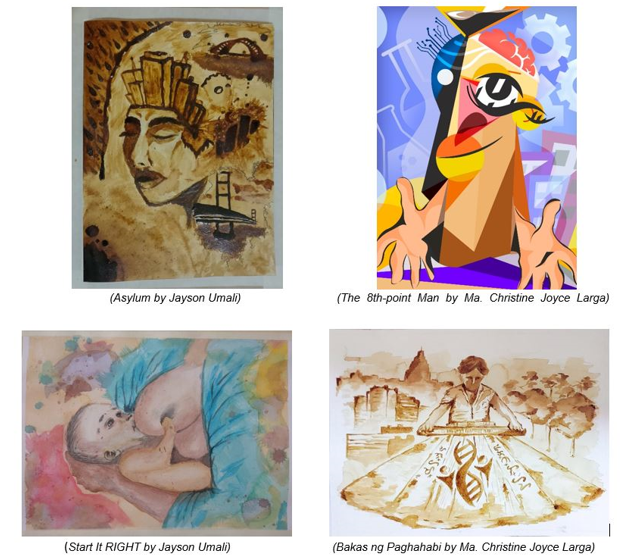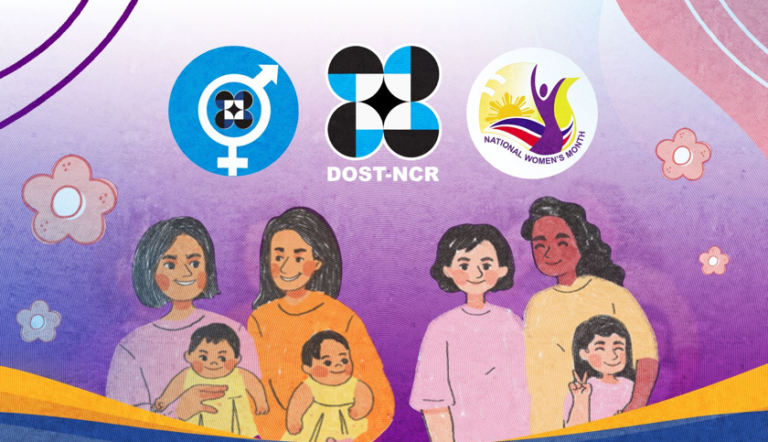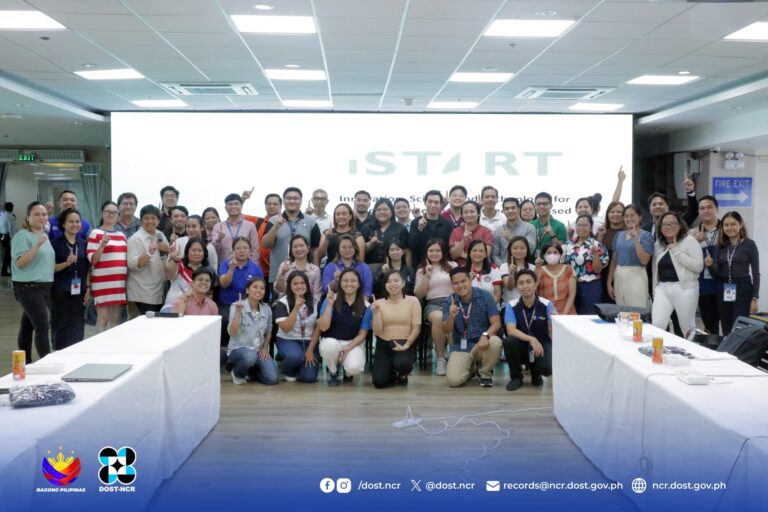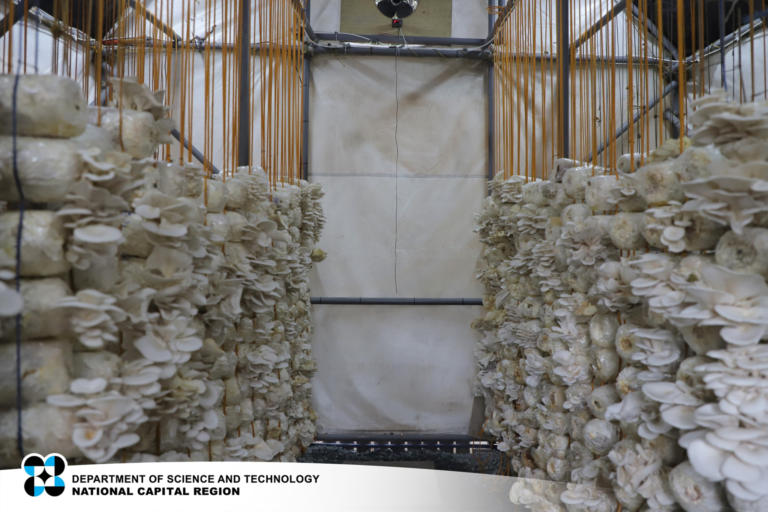Brgy. 412 Rises From the Estero, Sparkles Hope to the Whole Metro

According to research from the Innovations for Poverty Action or IPA, community-based approaches to development, also called community-driven development (CDD) has become an increasingly common tool used by governments to address the needs of poor communities.
For the Department of Science and Technology (DOST), the Community Empowerment thru Science and Technology (CEST), one of its flagship programs aiming to empower the poor and the marginalized communities and improve the quality of their lives through science, technology, and innovation, is one of the keystone initiatives of the agency to help alleviate poverty in the country.
“Walk of Faith”
Just like how a little egret walks or runs on lakes or shallow waters while chasing their prey, Filomena G. Cinco, Chairperson of Brgy.412 Zone 42, one of the 896 urban barangays in Manila and a small community situated along the Estero de San Miguel in Sampaloc, Manila kept on chasing for a better and improved environment as their community battles for relocation and eviction of households especially those along the creeks.
As a women-led community, Chairperson Cinco, together with her constituents, formed their own association called ‘Nagkakaisang Mamamayan ng Legarda (NML), wherein they were granted with a housing project which stands five buildings of three-storey setup alongside the Jesse V. Robredo Homeowners Association (JMRVHOA) housing, and there started their story of hope.
“Wings of Hope”
In 2017, the DOST-National Capital Region became one of the implementing agency partners for the Department of Environment and Natural Resources (DENR) Adopt-an-Estero Program. As Brgy. 412 is located along the Estero de San Miguel, the DOST-NCR organized series of community dialogues with the Barangay for the identification and provision of various S&T interventions through the CEST Program to improve their living conditions.
With the introduction of CEST, the DOST-NCR provided livelihood assistance to the community through the project “Sastrepreneurship Program for NML and JMRVHOA Esquinita Enterprise” granting them sewing equipment and production materials. Other partner agencies such as Rotary Club-Manila-San Miguel, Local Government Unit of Manila, Urban Poor Associates (UPA) and the Office of Congressman Edward Maceda also converged to establish a vocational training and livelihood production center in the community.
Moreover, the pandemic became an opportunity for the association to make more products including the production of face masks for Manila LGU frontliners and health workers, which allowed the community to earn almost PhP 330,000.00, with individual income ranging from PhP 13,000 – 69,000, from June 2019 to March 2021.
Meanwhile, the Gulayan sa Pamayanan (GSP) Program was introduced by the DOST-NCR and DOST-Philippine Council for Agriculture, Aquatic, and Natural Resources Research and Development (DOST-PCAARRD) to provide a source of alternative livelihood through communal gardens, as well as raise awareness on the consumption of nutritious vegetables such as lettuce and pechay. The Program also aims to address the scarcity of food especially during the pandemic. Trainings and urban gardening technology kits, such as the Enhance Potting Preparation (EPP) or “super paso”, were provided to 60 families.
Aside from maintaining a communal garden, the community also repurpose plastic bottles into “super paso” which they supply to other communities implementing the GSP Program. This became another source of income for Brgy. 412.
In July 2021, the community recorded a total income of about PhP 165,000.00 on its 9th planting cycle, with income coming from the communal garden and creation of super paso.
The community recognizes the importance of environment conservation and protection as it welcomed interventions provided by the DOST-funded Project Integrated Waste Analysis, Survey, and Technological Options (IWASTO) and DOST-Industrial Technology Development Institute (DOST-ITDI). The Barangay received the Dual Drum Composter to turn solid wastes into organic compost which can be used to the communal gardens and address waste management issues within the community.
Claro M. Recto High School, both Junior and Senior High School, were also given access to learning facilities with the DOST STARBOOKS, a stand-alone information source designed to reach those with limited or no access to S&T information resources to aid as reference in the school’s library. In addition, the community also partnered with the school to create low cost, nutritious, and delicious meal recipes directly from the communal garden’s produce to fight against community malnutrition among children.
Furthermore, DOST-NCR also conducted training sessions on earthquake hazards and scenarios, earthquake awareness and preparedness, and other disaster risk reduction and management-related interventions to strengthen the community’s resilience from natural disasters.
“Way of Change”
On November 27, the unwearied community of Brgy. 412 emerged as the National Winner for the 2021 Search for National Best CEST Community conferred during the celebration of the 2021 National Science and Technology Week.
The community was recognized for its exemplary and notable development anchored on the five CEST pillars: Livelihood and Enterprise Development, Human Resource Development, Health and Nutrition, Environmental Conservation and Protection, and Disaster Risk Reduction and Management and Climate Change Adaptation.
As one of DOST-NCR’s assisted communities under the CEST Program since 2017, the various S&T interventions provided to the community made them one of the most progressive, innovative, empowered, and resilient urban communities not only in Metro Manila, but in the whole country today.
Brgy. 412 received the Plaque of Recognition and Grand Prize of PhP 500,000 for the said award. On behalf of the community, Chairperson Cinco committed to continue with their advocacy in building a better community through scientific innovations.
With DOST-NCR’s intervention through the CEST Program which aims to build progressive, empowered and resilient communities, the then-disregarded urban barangay in Sampaloc, Manila who has been fighting for a safe territory, an improved way of life, and a better future has now risen from the estero, embracing sustainable livelihood through environment conservation, as well as being a model for urban community development.
By: Shaira P. Rapisora, SCCU

